Electric knives have become indispensable in modern kitchens, particularly lauded for their ability to seamlessly slice through meats, fish, and bread with precision and ease. These knives are equipped with serrated blades powered by an electric motor, which reduces the effort needed while ensuring even and consistent cuts. However, just like traditional knives, electric knife blades require regular maintenance to maintain their sharpness and efficiency.
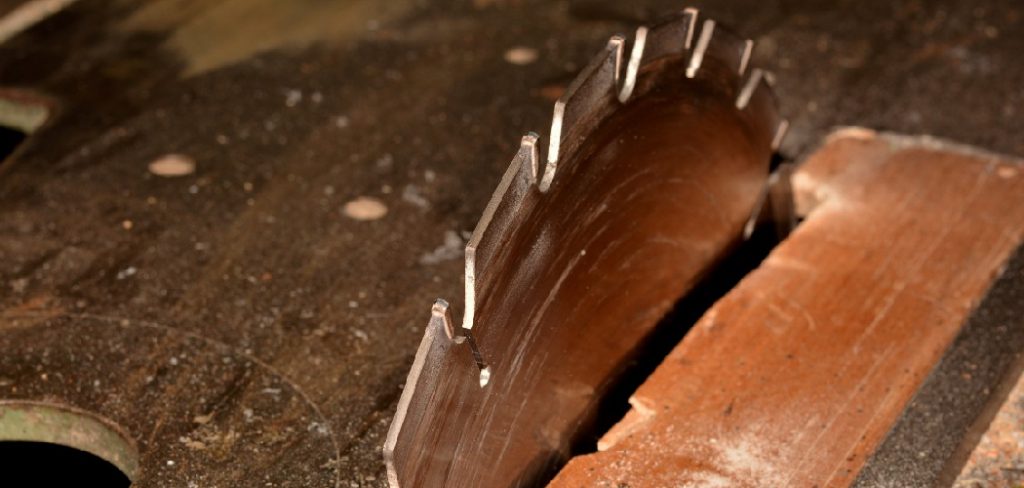
Dull blades make cutting more laborious and can lead to uneven slices and potentially unsafe cooking practices. Therefore, understanding how to sharpen electric knife blades becomes crucial for anyone seeking to maintain the longevity and functionality of their appliance. This article aims to guide users step by step through the process of sharpening electric knife blades safely and effectively, ensuring that you continue to achieve the perfect slice with every use.
Understanding Electric Knife Blades
Blade Construction and Material
Electric knife blades are typically constructed from stainless steel or high-carbon steel, both of which offer durability and resistance to corrosion. While stainless steel is known for its strength and sleek appearance, high-carbon steel provides a sharper edge, though it may require more frequent maintenance. Unlike traditional knives, electric knife blades feature serrated edges that facilitate cutting through tough or fibrous materials with ease. This unique design is part of what makes sharpening them a more complex task compared to straight-edged knives. The serrations need special attention to ensure each tooth remains precise and effective.
Types of Electric Knives
Electric knives come in two main types: corded and cordless. Corded knives are powered through a continuous connection to an electrical outlet, providing consistent and prolonged operation, making them ideal for extensive use without recharging. In contrast, cordless models offer the convenience of portability and are powered by rechargeable batteries, allowing users more flexibility in movement but requiring periodic charging. Additionally, electric knives vary in their blade designs, including fine-toothed versions for delicate slicing needs and coarser serrated blades suited for tougher tasks. Each type holds its unique advantages, fitting different culinary needs and preferences.
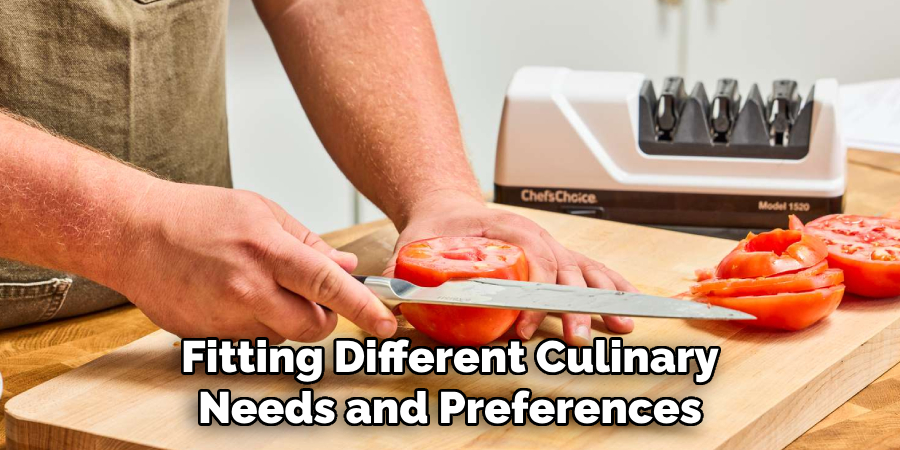
Tools You’ll Need to Sharpen Electric Knife Blades
Sharpening Stones
Sharpening stones are versatile tools that can effectively sharpen both serrated and straight-edged blades. For electric knife blades, sharpening stones can meticulously address the entire length of the serrated edge by working on each individual serration. The key to using a sharpening stone lies in selecting the appropriate grit for the specific sharpening task. Coarse stones are essential for restoring dull blades to their optimal cutting potential. In contrast, fine-grit stones are ideal for honing and refining an already sharp edge to maintain razor-like precision. Choosing the right grit is critical, as it influences the effectiveness and quality of your sharpening efforts.
Electric Knife Sharpening Systems
Electric knife sharpeners are specifically crafted to simplify the maintenance of serrated blades, making the sharpening process both efficient and effective. These systems often feature built-in angle guides that ensure precision sharpening by maintaining the correct angle throughout the process. As a result, electric sharpeners can swiftly restore the sharpness of blades with minimal effort. Users can achieve professional-level sharpening outcomes by utilizing these systems, granting them the confidence of consistent and precise cuts with their electric knives.
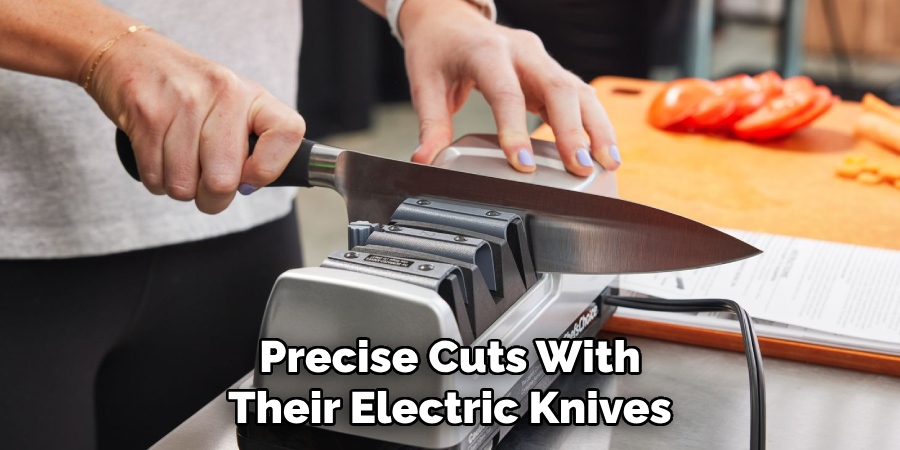
Alternative Tools
For minor maintenance, a honing rod can be invaluable, helping to realign the blade’s edge and extend its sharpness between full sharpening sessions. Utilizing a pair of pliers or a specially designed serrated blade tool is crucial when dealing with serrations. These tools enable users to work with greater control, access, and precision on individual serrations, ensuring each tooth is as sharp and effective as possible. Regular maintenance with the right tools can significantly extend the lifespan of electric knife blades.
Preparing to Sharpen Your Electric Knife Blade
Safety First
Before starting the sharpening process, it is crucial to prioritize safety to avoid any accidents or injuries. Always ensure that the electric knife is completely turned off and disconnected from its power source. This precaution prevents any accidental start-up while handling the blades. Additionally, wearing protective gloves is highly recommended. These gloves provide an extra layer of security against potential cuts or scrapes during the sharpening process, allowing you to handle the knife with greater confidence and care.
Cleaning the Blade
To achieve optimal sharpening results, starting with a clean blade is essential. Begin by carefully removing any residual food particles or oils clinging to the serrated edges. Warm the blade with a soft cloth dampened with mild, soapy water to eliminate any buildup. Then, rinse the blade thoroughly with clean water and dry it with a dry towel. Ensuring the blade is perfectly dry helps achieve precise sharpening and protects the metal from corrosion during the process.
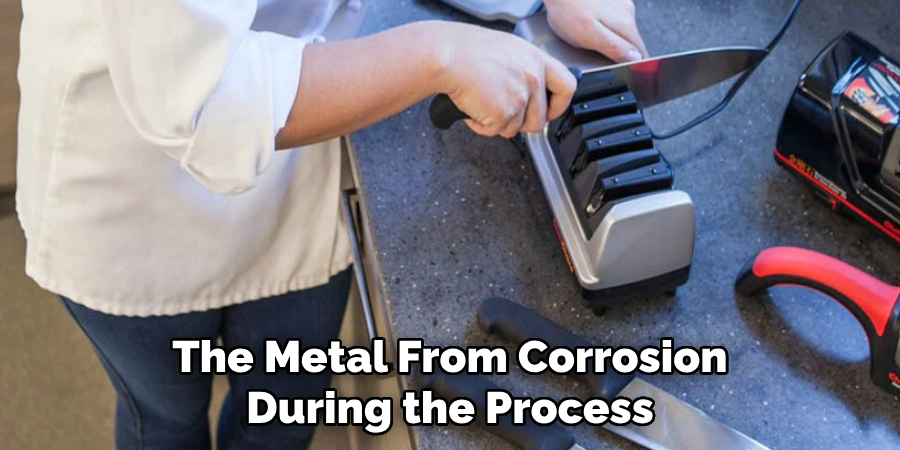
How to Sharpen Electric Knife Blades: Sharpening Serrated Electric Knife Blades
Why Serrated Blades Need Special Care
Serrated blades differ significantly from straight-edged blades due to their unique structure, featuring teeth that must be sharpened individually to maintain their cutting efficiency. This design allows serrated blades to slice through tougher materials easily but presents challenges when sharpening, as each tooth requires specific attention without impairing the blade’s overall functionality. The intricate task of honing these blades necessitates precision and patience to ensure that the serrated edges remain effective and intact.
Using a Sharpening Stone or Rod
Focus on one serration at a time to sharpen a serrated electric knife blade using a fine-grit sharpening stone. Hold the stone at an angle that matches the original bevel of the tooth, and carefully run the stone along the edge. This gentle motion should follow the curve of the serrations to effectively sharpen them without damaging adjacent teeth. It’s essential to apply consistent pressure to maintain uniform sharpness across all serrations. Alternatively, a round ceramic rod can be utilized for minor touch-ups on the blade, allowing for precise control and efficient sharpening of the serrated edges. You can efficiently restore the blade’s sharpness by gently inserting the rod into each serration and following the edge.
Using an Electric Sharpener for Serrated Blades
An electric sharpening system with a serrated blade guide simplifies the sharpening process effectively and safely. First, ensure the blade is properly guided into the sharpener, aligning it with the serrated guide. Maintaining a consistent angle is crucial; most systems provide built-in guides to assist with this task. Each tooth is evenly sharpened as the sharpener runs, allowing for consistent cutting performance. To achieve optimal results, periodically check the blade to ensure even sharpness across all serrations and make any necessary adjustments during the process. Using an electric sharpener can save time while providing a professional-quality finish.
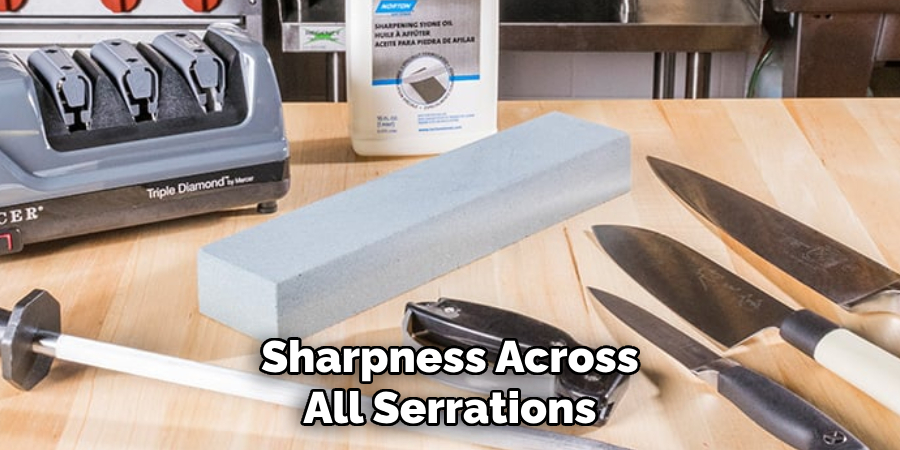
How to Sharpen Electric Knife Blades: Sharpening Straight Blades on an Electric Knife
Sharpening with a Sharpening Stone
When sharpening straight blades using a sharpening stone, precision and consistency are key to maintaining a razor-sharp edge. Begin by selecting a fine-grit stone and securely placing it on a stable surface. Hold the knife at a consistent angle, typically around 20 degrees, ensuring you maintain this angle throughout the sharpening process. Start at the base of the blade and run it smoothly, even strokes across the stone, moving from the tip to the heel. Repeat this motion for several passes on one side before flipping the blade to work on the opposite side. Periodically test for sharpness by lightly cutting through a piece of paper.
Using an Electric Knife Sharpener
Electric knife sharpeners are designed to deliver even, efficient sharpening for straight blades. To use one, ensure the sharpener is set up correctly and insert the blade into the designated slot. Gently pull the blade through the sharpener while maintaining even pressure; this ensures consistent sharpening across the entire blade length. It’s important to follow the manufacturer’s instructions regarding the number of passes and timing to achieve optimal results. Regularly checking the blade after each pass will help ensure the sharpness is uniform and meets your cutting needs.
Honing the Electric Knife Blade
What Honing Does
Honing is essential for maintaining the edge of an electric knife blade, ensuring it remains sharp and efficient for extended use. Unlike sharpening, which removes material to create a new edge, honing works by realigning the existing edge, which can become slightly bent or uneven with regular use. Regular honing prevents the blade from becoming dull and helps extend the time between necessary sharpening sessions, maintaining the knife’s cutting performance and longevity.
Honing the Blade
To hone an electric knife blade, use a honing rod or honing steel, ensuring the tool is suited to the blade type. Start by holding the honing steel vertically, with the tip resting on a secure surface. Place the blade at a 20-degree angle against the steel and gently draw it down the rod sweepingly, maintaining consistent light pressure. Repeat this process on both sides of the blade with steady strokes. This precise method ensures the edge is realigned and sharpness is maintained without causing damage to the blade, allowing for optimal performance with every use.
Testing the Sharpness of the Electric Knife Blade
Visual Inspection
To visually inspect the sharpened edge for smoothness, hold the blade under a light source and examine the edge. A sharp blade will reflect light uniformly along its length, indicating a consistent cutting edge. Ensure there are no visible nicks or rough spots that might hinder smooth cutting.

Physical Testing
For physical testing, gently slice the blade through soft materials such as bread or paper. A sharp knife should make clean cuts without tearing. Test the knife on meat or fish; it should slice smoothly with minimal effort. Ensure that cuts are precise and effortless, indicating the knife’s readiness for practical use. Regularly assessing sharpness through these methods helps maintain optimal performance, letting you know when re-sharpening is necessary.
Maintenance and Care for Electric Knife Blades
Regular Cleaning
Proper cleaning after each use is crucial to prevent rusting and food particle buildup on your electric knife blade. Immediately wash the blade with warm, soapy water, using a soft cloth or sponge to gently remove any residue. Avoid abrasive pads that can scratch the surface. Once cleaned, thoroughly dry the blade with a soft towel to prevent moisture-related damage. Store the blade in a protective sheath or designated holder to maintain its sharpness and avoid accidental damage.
Periodic Sharpening
The frequency of sharpening your electric knife depends on how often you use it. For regular home use, sharpening every three to six months is recommended. Maintaining the blade’s edge ensures efficient performance and prevents excessive wear that can shorten the knife’s lifespan. Regular sharpening keeps your knife in optimal condition, ensuring clean, precise cuts each time you use it.
Conclusion
In summary, understanding how to sharpen electric knife blades involves selecting the appropriate sharpening tools, diligently maintaining the correct angle, and ensuring that the blade is effectively honed. These steps are essential to achieving a consistently sharp edge that enhances your cutting performance and simplifies food preparation. A well-sharpened electric knife improves precision and reduces the effort needed in the kitchen. By committing to regular sharpening and proper blade maintenance, you can ensure your electric knife remains in optimal condition, delivering precise and efficient cuts with every use.
Edmund Sumlin is a skilled author for Metal Fixes, bringing 6 years of expertise in crafting a wide range of metal fixtures. With a strong background in metalwork, Edmund’s knowledge spans various types of fixtures, from decorative pieces to functional hardware, blending precision with creativity. His passion for metalworking and design has made him a trusted resource in the industry.
Professional Focus:
- Expert in Metal Fixtures : Edmund aesthetic specializes in creating durable and innovative metal fixtures, offering both appeal and functionality. His work reflects a deep understanding of metalworking techniques and materials.
- Sustainability Advocate : He is dedicated to using sustainable practices, ensuring that every fixture is crafted with eco-friendly methods while maintaining high-quality standards.
In his writing for Metal Fixes, Edmund provides valuable insights into the latest trends, techniques, and practical advice for those passionate about metal fixtures, whether they are professionals or DIY enthusiasts. His focus on combining artistry with engineering helps others discover the true potential of metal in design.


